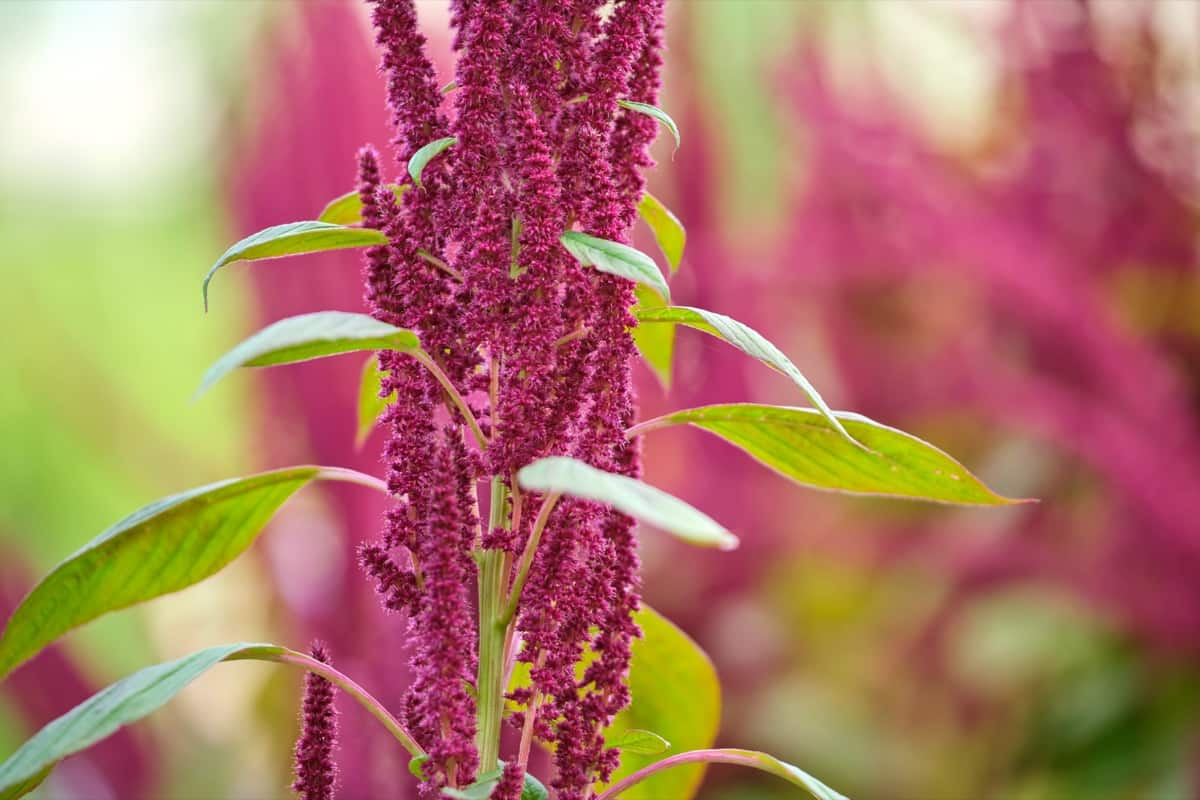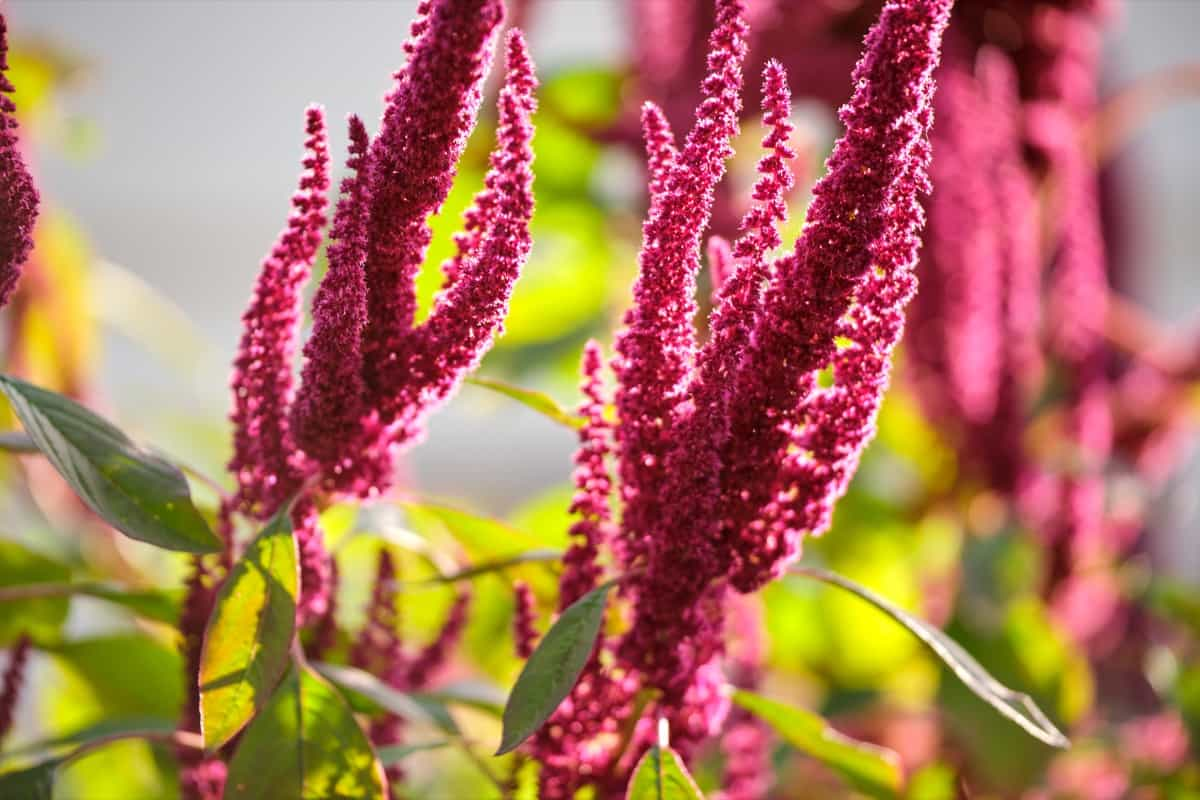All Amaranthus plants, collectively called amaranth, are short-lived. Amaranth leaves, amaranth grains, and amaranth stems are used for cooking. The amaranth plant is so versatile that almost all its parts can be consumed. Nutrition is abundant in amaranth leaves. It is fun to grow amaranth because it can also be grown as an ornamental plant. The flowers of amaranth are brightly colored, and sometimes they grow upright or trailing. Amaranth flowers produce seeds known as amaranth grain. As green, Amaranth leaves are used.

A greenhouse is the best place to grow amaranths for seed regeneration since many germplasm accessions cannot mature seeds in the field. Seeds are usually harvested about 2-4 months after planting when plants are cultivated under short photoperiods in greenhouses. As a result of this relatively rapid cycling of crops, greenhouses can be utilized more efficiently.
How to Grow Amaranth in Greenhouse
Sun and Temperature Requirement for Growing Amaranth in Greenhouse
At least six hours of sunlight are required for amaranth to grow. In the USDA’s growing zones, plants can be grown in temperatures ranging from 3 to 10. 18-30°C is the ideal temperature for germination. This crop can not withstand cold temperatures when young and is susceptible to spring frosts. However, mature plants can tolerate the first frosts of the fall. Hot temperatures are a favorite of this plant, and it can tolerate temperatures of 35-38°C.
Soil Requirement for Growing Amaranth in Greenhouse
The soil should be rich and well-drained for amaranth to grow. Although it tolerates poor conditions, it may not be as vigorous in dense clay soils. Adding compost and peat moss can improve the organic material and drainage. pH levels between 6.0 and 7.5 are ideal.
Planting Amaranth
Amaranth is a warm, sun-loving plant. Amaranth plants grow best outdoors in the spring and early summer. Seeds should be planted indoors 4-6 weeks before the last frost in your region if you want to start earlier. While amaranth grows in many soil types, it thrives best in well-drained, fertile, and loamy soil.
Ensure your plants receive sunlight by planting them directly in rows of raised beds or large containers (10-18 inches in diameter). Plants started indoors can be transplanted once the last frost has passed. Many gardeners grow amaranth near the border or at the back of the garden. This plant is a wonderful companion to corn, beans, and squash, the three sisters’ vegetables. You can grow amaranth alongside other vegetables or fruits if you have a garden.
Water and Humidity Requirement for Growing Amaranth in Greenhouse
The amaranth plant is drought-tolerant. The best time to water Amaranth plants is when they are young seedlings or when the seeds are germinating. Once plants reach 2-4 inches tall, you can water them 1-2 times a week if you keep the soil moist. The amaranth plant is water-efficient and can survive a few weeks without water. Water amaranth in the early morning or late afternoon, focusing the water on the roots using a sprayer or drip irrigation. Flowers and grain should not be watered. There are no humidity requirements for amaranth.
Fertilizing Requirement for Growing Amaranth in Greenhouse
Because amaranth plants require little maintenance, fertilization is only necessary under poor growing conditions. As soon as the amaranth seeds are planted, add fertilizer like fish emulsion or worm castings. Before planting, work some composted manure into the bed and skip fertilizer. It is not recommended to use nitrogen-heavy fertilizers such as manure.
In case you missed it: Best Container Plants for Northern California

Pruning/Training Requirement for Growing Amaranth in Greenhouse
Even though pruning is not required for this annual plant, you can trim the top half of its young leaves back when they are young to promote more flowers. This will promote stalks to growth, which leads to more flower heads. In high winds or storms, tall varieties may require additional support. As the stalk of the amaranth grows, tie it gently to the support using a trellis, netting, or individual stakes.
Diseases control in Greenhouse Grown Amaranth
There aren’t that many diseases that threaten amaranth. During the early stages of plant development, damping off can be a major concern for produce crops. Too much nitrogen or too much water can cause plants to die suddenly. You can prevent this by limiting fertilizer use and allowing the soil to dry between waterings. As well as thinned seedlings, your planting containers can be sanitized and encouraged to have more airflow.
The growth of your amaranth can also be affected by root rot. Overly wet conditions usually cause this, which can be easily remedied by ensuring your soil drains well. Plants suffering from root rot may benefit from less frequent watering but often won’t remain green and healthy. To prevent the spreading of fungal pathogens that cause root rot, remove the plant if it dies and do not compost its roots.
Pest control in Greenhouse Grown Amaranth
There may be visible damage to leaves caused by amaranthus stem weevils. They chew on the roots with their larvae. Growth will likely be stunted, and stalks will twist. Remove any infected leaves and larvae you find, but you will probably need to remove the plant completely. In some cases, neem oil has reduced the number of insects.
Tarnished plant bugs attack seeds and flowers by sucking out their liquid. Seed production is reduced as a result. Pyrethrin is an organic pesticide that can be applied to eradicate infestation. Plants can be protected from insects when young with floating row covers. Floating row covers offer a preventative measure against flea beetles, which love seedlings. Diatomaceous earth or kaolin clay can be applied if the infestation is mild. Pyrethrin should be used for severe infestations.
Harvesting Amaranth
Amaranth Leaves
The harvesting of amaranth is divided into two parts. The harvest of amaranth leaves can begin just three weeks after sowing if you are growing it for its leaves. The taste of tender leaves is much better and creamier. When the Amaranth plants are allowed to grow, they will reach a height of about 7-8 feet. A thick stem on amaranth plants is also eaten.
Amaranth Grains
Amaranth grains form after the flowering of an amaranth plant. Harvesting amaranth seeds takes longer than harvesting amaranth leaves. Harvesting amaranth grains begins when the amaranth flower stalks dry out. You can notice the grains falling from the amaranth flower if you gently rub it. The flowers can now be cut and dried. The seeds can be separated from the chaff by beating flowers inside a bag and winnowing.
In case you missed it: How to Grow Coloured Capsicum/Bell Peppers in Greenhouse: A Seed to Harvest Guide

Conclusion
Throughout history, amaranth has been eaten as a leaf vegetable and grain. Since ancient times, amaranth seeds have been used in Central and Latin America and the Himalayas. Amaranth is a tropical-zone plant susceptible to frost, so starting greenhouses will help it survive until warmer weather arrives.
- Feed Your Flock for Less: Top 10 Tips to Save on Chicken Feed
- Ultimate Guide to Ossabaw Island Hog: Breeding, Raising, Diet, and Care
- Hatching Answers: The Top 10 Reasons Your Chickens Aren’t Laying Eggs
- Eggs and Economics: Breaking Down the Cost of Raising Backyard Chickens
- Defend Your Greens: Proven Methods to Keep Iguanas Out of Your Garden
- Ultimate Guide to Cinnamon Queen Chicken: A Comprehensive Guide for Beginners
- Ultimate Guide to California Tan Chicken: Breeding, Raising, Diet, Egg-Production and Care
- Ultimate Guide to Marsh Daisy Chicken: Breeding, Raising, Diet, and Care
- 10 Types of Chicken Farming Businesses You Can Start for Profits